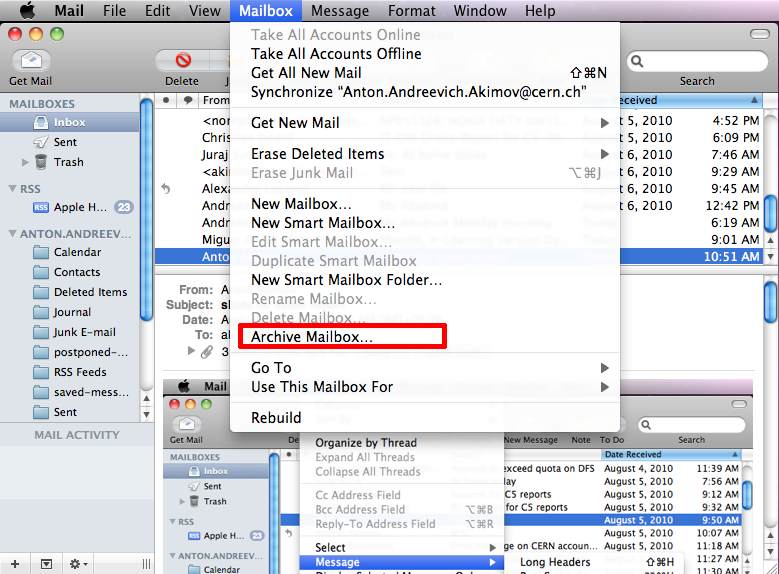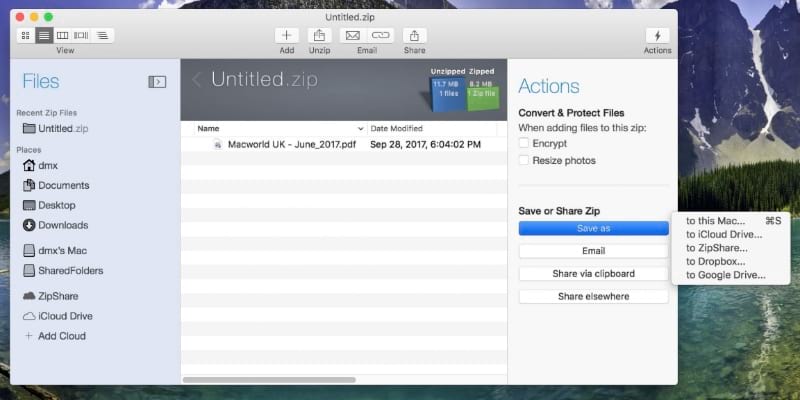

- ARCHIVE PROGRAM FOR MAC HOW TO
- ARCHIVE PROGRAM FOR MAC FOR MAC
- ARCHIVE PROGRAM FOR MAC MAC OS
- ARCHIVE PROGRAM FOR MAC ZIP FILE
- ARCHIVE PROGRAM FOR MAC ARCHIVE
ARCHIVE PROGRAM FOR MAC HOW TO
Here's how to do it.ġ) Open the app which has your rar file.

However, there are ad-supported free apps such as Zip & RAR File Extractor Free that let you open compressed files. Most apps will ask you to pay for access to cloud storage services such as Dropbox.
ARCHIVE PROGRAM FOR MAC ARCHIVE
This automatically extracts the contents of the archive in the directory the rar file is in.Īfter you've opened an archive with "Open With" once, future archives can be unpacked by double-clicking on the file.ĭue to iOS's restrictions on access to the file system, opening compressed files is not straightforward. Once installed, follow these steps:ġ) Right-click the rar file and select "Open With".Ģ) Now choose RAR Extractor Free from the list of programmes.
ARCHIVE PROGRAM FOR MAC MAC OS
To open rar files on Mac OS X, install a free rar extractor app such as RAR Extractor Free. If you choose "Extract Here" instead, then the files are saved in the folder where the archive is store.

Once you install 7-Zip, follow these steps to open rar files:ġ) Right-click the rar file to be opened.ģ) In the pop-up box that shows up, choose the folder where you'd like to extract the compressed files and click "OK". Opening rar files will require a free tool called 7-Zip. If you have Windows 7 or 8, the OS can open zip files without any software. Read on to find out the easiest way to unpack an archive: On the Mac and PC, software like WinZip and WinRAR easily open all kinds of archives, but they're not the simplest tools we found. These are two popular compressed file formats, which are used to reduce the amount of space files take up - very handy when you want to send a mail, or are keeping data for long term storage.Įven if you know how to open them on your computer, you might find it a little more difficult on your phone or tablet, but with the right software, it's easy to do, no matter what device you're using.
ARCHIVE PROGRAM FOR MAC ZIP FILE
olm extension.If you've ever gotten a mail with a rar or zip file attached, and not been sure how to open it, then this guide can help clear up your doubts.
ARCHIVE PROGRAM FOR MAC FOR MAC
On the File menu, select Export > Outlook for Mac Data File.Ĭhoose to filter by category or item type. To export all items in Outlook, select Items of the following types, and then select all the check boxes.Ĭlick the right arrow to continue, and then follow the instructions. The Outlook for Mac Data File uses the. During the export process, you can choose to keep the exported items in Outlook, or to delete them after they are exported. Similarly, you might want to export all your contacts on your home computer and then import them on your work computer. For example, if you want to transfer networking information from your work computer to your home computer, you could export only items that you've assigned to the Networking category. When you export to an Outlook for Mac Data File, you can choose to filter information by category or by item type. This is not available in Outlook 2011 for Mac, but you can set up your own data backup - see Automatically archive or back up Outlook for Mac items. Note: In Outlook for Windows, older Outlook items are archived automatically on regular intervals, also known as AutoArchive. Use Time Machine to automatically archive or back up items in Outlook 2016 for Mac pst file into Outlook 2016 for Mac from Outlook for Windows The Outlook team actively monitors this forum. To request additional export options, visit the Outlook Suggestion Box to leave your feedback. The only export option available at this time is the. I want to export to iCloud or to some other type of archive file Choose Finish.įor information on how to access the data that you've saved in an Outlook for Mac Data File (.olm), see Import email messages, contacts, and other items into Outlook 2016 for Mac. Once your data has been exported, you'll get a notification. In the Save As box, under Favorites, choose the Downloads folder, and click Save. In the Export to Archive File (.olm) box, check the items you want to export, and choose Continue. If all Outlook updates are applied and you still don't see the Export button, look for Export on the Outlook File menu. On the Outlook Help menu, click Check for Updates. Note: Don't see the Export button? Make sure you have the latest version of Outlook.


 0 kommentar(er)
0 kommentar(er)
